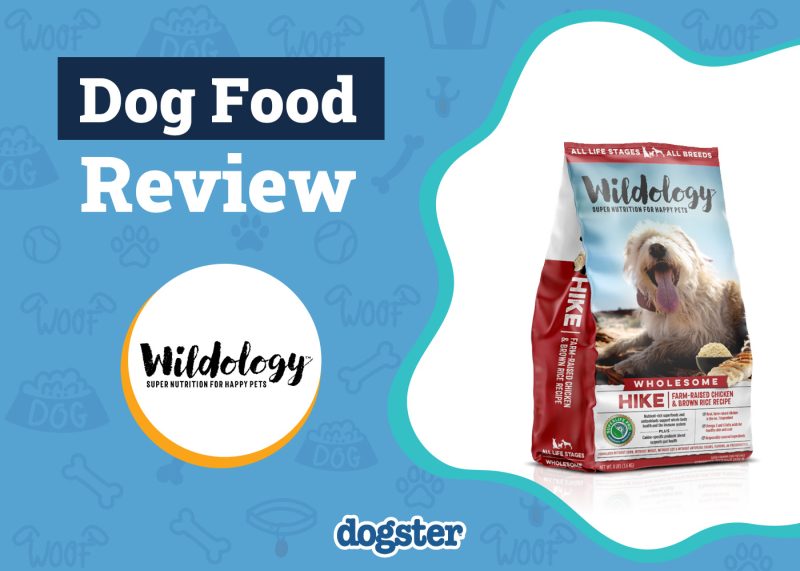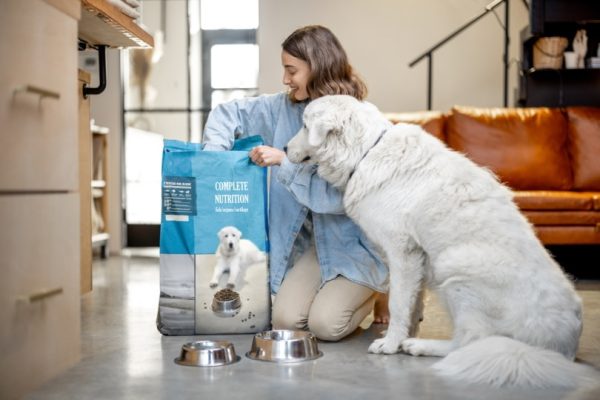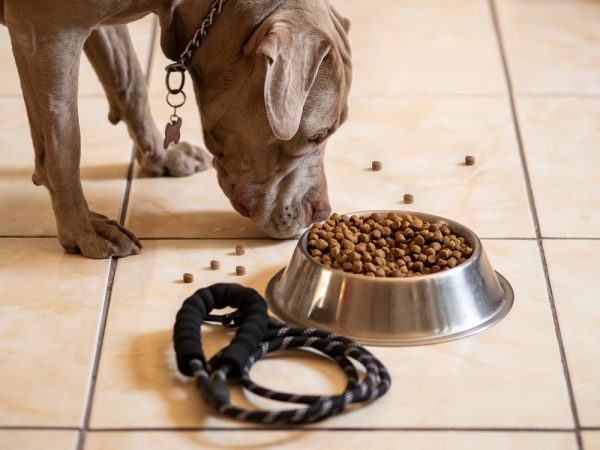In this article
An estimated 20% of dogs over 1 year of age have osteoarthritis, or degenerative joint disease (DJD), which is a progressive and complicated disorder. It can profoundly impact an animal’s quality of life and, sadly, has no cure. Instead, pet owners work with their veterinarians to manage the condition and its accompanying pain to make their pups more comfortable despite the deteriorating shock-absorbing capability of their joints.
We understand how you may feel helpless in alleviating your dog’s pain. It must be excruciating to watch your pup struggle to walk and have difficulty jumping off the sofa. Rest assured that lifestyle factors, such as diet and nutrition, can make your pooch more comfortable. Your actions can help slow down the progression of the disease and the complications it can cause.

The 5 Human Foods to Offer Dogs With Arthritis
Feeding your dog a healthy, balanced diet is essential, especially if they have arthritis. If you want to include human foods in their diet then offering anti-inflammatory foods can be a good idea. Remember to check with your veterinarian before making changes to your dog’s diet.
1. Proteins Rich in Omega-3 Fats
If your dog has arthritis, foods with omega-3 fats are going to be one of the best options for them. Oily fish are a prime example of this, and these types of fish include salmon, sardines, or mackerel. These types of fish contain eicosapentaenoic acid (EPA) and docosahexaenoic acid (DHA), both of which are known for having anti-inflammatory properties, thus reducing the inflammation associated with arthritis.
2. Green Vegetables

Green veggies are rich in antioxidants, meaning they’re going to help fight inflammation in your dog’s body. You can offer them things like broccoli, kale, collards, or spinach in small amounts. However, make sure that you thoroughly wash your vegetables and cut them into small, bite-sized pieces that can be easily chewed and swallowed.
3. Bone Broth
When it comes to arthritis, you really want to do your best to support your dog’s joints, and one way to do that is by offering foods rich in collagen. Bone broth is one such food, and it’s made by simmering bones and connective tissue in water. Additionally, it contains chondroitin and glucosamine, which are two supplements that are commonly used to help support joint health in dogs.
4. Blueberries, Apples, and Cranberries
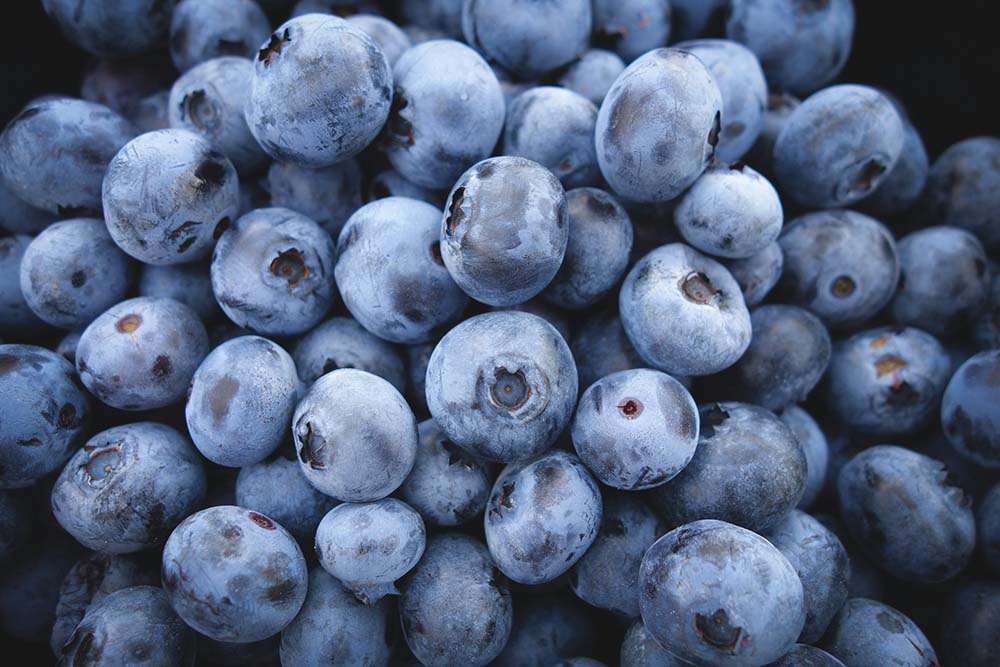
Blueberries, cranberries, and apples are also excellent sources of antioxidants that are safe treats for your pooch with arthritis. They are also high in fiber and relatively low in calories, making them a great snack for any dog in moderation, with or without joint problems. Just be careful not to offer any of the apple seeds!
5. Green-Lipped Mussels
While this isn’t your typical dog snack, studies have shown that green-lipped mussels are an excellent food option for dogs with arthritis. They contain a high level of omega-3 fatty acids, and other naturally occurring compounds that can help to improve joint lubrication and mobility, as well as reduce inflammation, joint pain, and stiffness. Green lipped mussels also contain a unique omega-3 fatty acid called eicosatetraenoic acid (ETA) which has also been shown to help with mobility. However, these need to be prepared properly, and it’s often best to offer them in a supplement form.
The 8 Helpful Supplements for Dogs With Arthritis
The following supplements are commonly used to help support dog joint health, although we recommend getting approval and safe recommendations from your vet before offering any of them to your dog.
1. Omega-3 Fatty Acids (DHA)
The most compelling supplements for arthritis contain the omega-3 fatty acids docosahexaenoic acid (DHA) and eicosapentaenoic acid (EPA) from marine sources, and have been shown to reduce inflammation and pain associated with arthritis.
2. Chondroitin Sulfate

Chondroitin sulfate is another commonly prescribed supplement by vets for the treatment of arthritis. It is believed to provide components for helping repair cartilage in the joints.
3. Glucosamine Hydrochloride
Glucosamine is a naturally occurring compound that is common as an over-the-counter arthritis remedy, often in conjunction with chondroitin. It is thought to help repair the joints, as it is a building block of cartilage.
4. Methylsulfonylmethane (MSM)
Another naturally occurring substance, MSM is known for its anti-inflammatory and antioxidant properties. There have been a few human trials but no studies into its use in dogs with arthritis.
5. Boswellia
Boswelia is extracted from the bark and resin of the Boswelia tree. A study has suggested that dogs can have an improvement in the signs of arthritis when taking this supplement.
6. Turmeric (Curcumin)
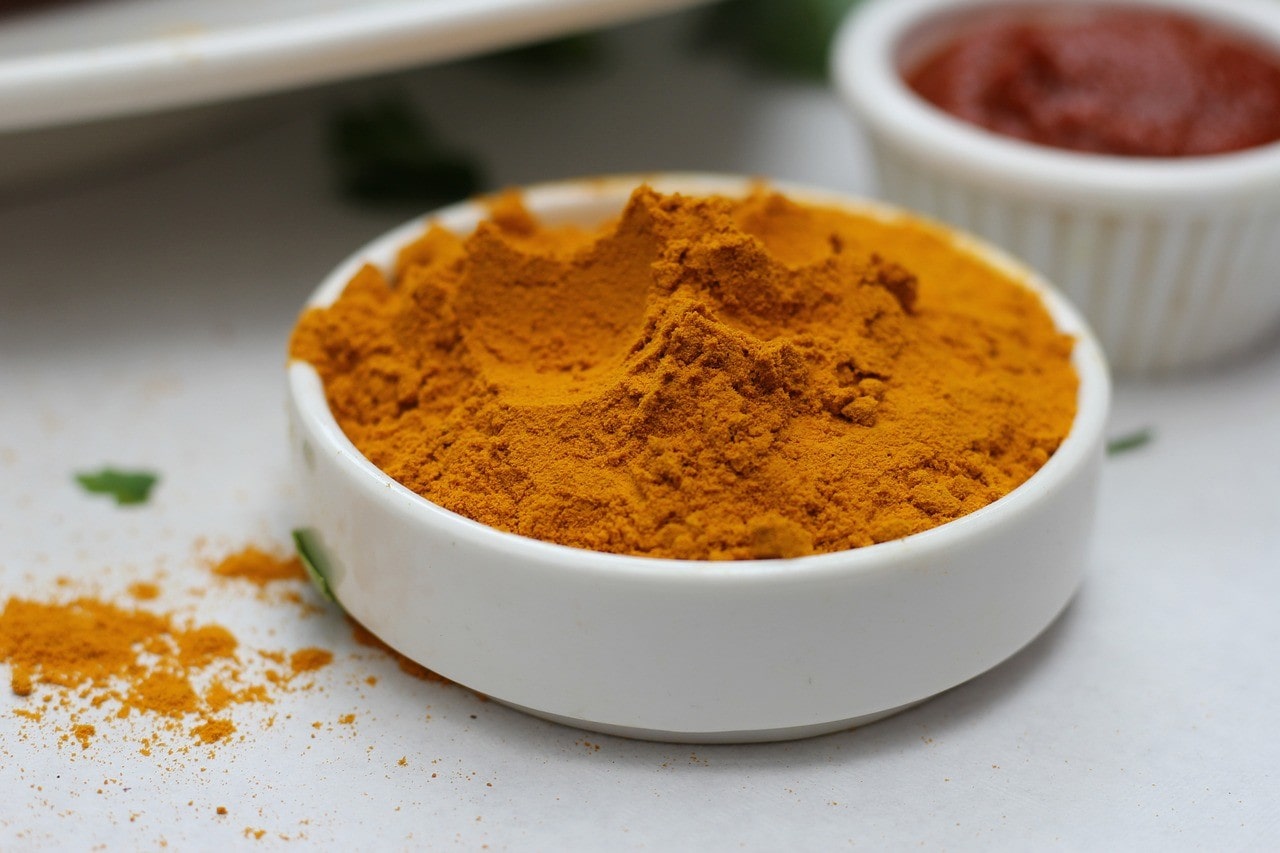
Turmeric can act as a natural anti-inflammatory and some small studies suggest that it can help dogs with osteoarthritis. Side effects and interactions with other medications can be a problem, so always discuss it with your vet before adding it to your pet’s diet.
7. Green-Lipped Mussel
We’ve already touched on green-lipped mussels above, and a supplement is the best way to offer its benefits to your arthritic dog. Research shows that it can have a beneficial impact on gait function and the reduction of the overall signs of osteoarthritis.
8. Cannabidiol (CBD)
CBD is a controversial topic. It is largely unregulated as a dietary supplement and research for dogs is scarce. However, some studies have shown that dogs with arthritis that were given CBD for a month had an improvement in pain relief and quality of life. Again, though, we recommend discussing this with your vet.
A vet will be able to advise you on the best course of action to ensure the well-being of your pet.
If you need to speak with a vet but can't get to one, head over to PangoVet. It's an online service where you can talk to a vet online and get the personalized advice you need for your pet — all at an affordable price!

The 7 Commercial Diets for Dogs With Arthritis
There are two main factors to consider when choosing a diet for your arthritic dog: one is maintaining an optimal body weight, and the other is the inclusion of joint supplements into their diet.
Over half of dogs are overweight or obese, meaning that one of the best ways to combat arthritis is to get them on a weight-management diet. If your pup is struggling with arthritis, their being overweight is likely causing them more pain and having an impact on the progression of the disease, so we suggest opting for a diet formulated for this purpose.
The manufacturers of these foods develop these products to ensure their nutrition isn’t compromised in an effort to lose weight or maintain a healthy weight.
Researchers have examined the benefits of different formulations that can help arthritic dogs. One study considered the advantages of products containing various ingredients concluded that current evidence showed omega-3 fatty acids had the most beneficial effects. They also concluded that further studies were needed to fully understand the potential effects of collagen and cannabidiol.
One of the best ways to incorporate these foods into your pet’s diet is with prescription-based foods created solely for dogs with joint and mobility issues. You’ll likely need a prescription from your vet, so give them a call to discuss if these types of foods are a good option.
Another way to make an impact in your dog’s life when living with arthritis, or for breeds known to be at increased risk, is by giving them a diet with the appropriate nutritional profiles for their breed, age, and size. We’re big fans of diets formulated for specific breeds, such as the line produced by Royal Canin. All breeds have different issues and propensities to weight gain. One study found that Pugs, Beagles, Golden Retrievers, and English Springer Spaniels had the greatest chances of becoming overweight for example. Customized diets can account for the increased risk of these issues.

Weight Management and Arthritis
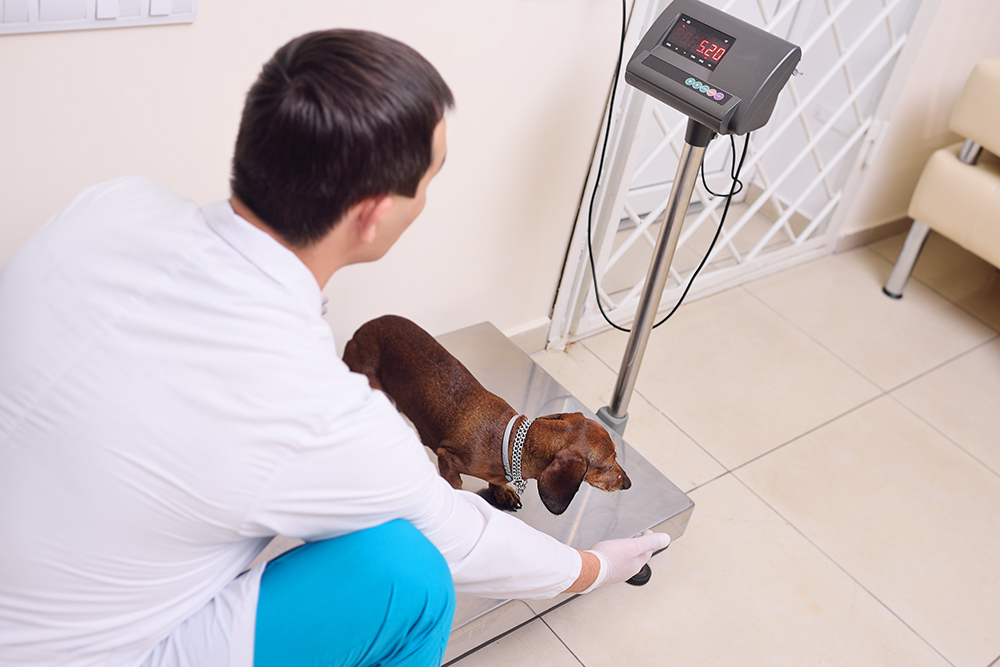
Some authorities estimate that over half of dogs are either overweight or obese. Obesity increases your pet’s risk of many chronic diseases. A survey of claims received by Nationwide Pet Insurance identified arthritis as the number one complication of obesity in dogs. Obesity can also increase your pup’s risk of diabetes and heart disease, all of which can shorten your pet’s lifespan.
Being overweight puts unnecessary strain on your pooch’s joints and can worsen their discomfort. That makes the diet an excellent way to help manage the disease and improve your pup’s quality of life. The first step toward creating a healthy diet for your dog is to determine their current weight status with their body condition score (BCS). This information can help you modify your pet’s diet for optimal results.
Guidelines for losing weight are similar to what people should follow. You should proceed slowly, aiming for modest weekly weight loss. You don’t want your dog to feel deprived, which can encourage overeating. The slow approach allows their body to adapt to make it as easy as possible.
You should also shoot for a calorie count appropriate for your pet’s weight. Commercial food labels must provide this information and feeding guidelines to help on this front. We strongly urge you to measure out the kibble or canned food—don’t eyeball or estimate it. The Pet Nutrition Alliance calculator can create a weight loss plan based on your dog’s current and ideal weight but we would always advise you to seek advice and support from your veterinary clinic.
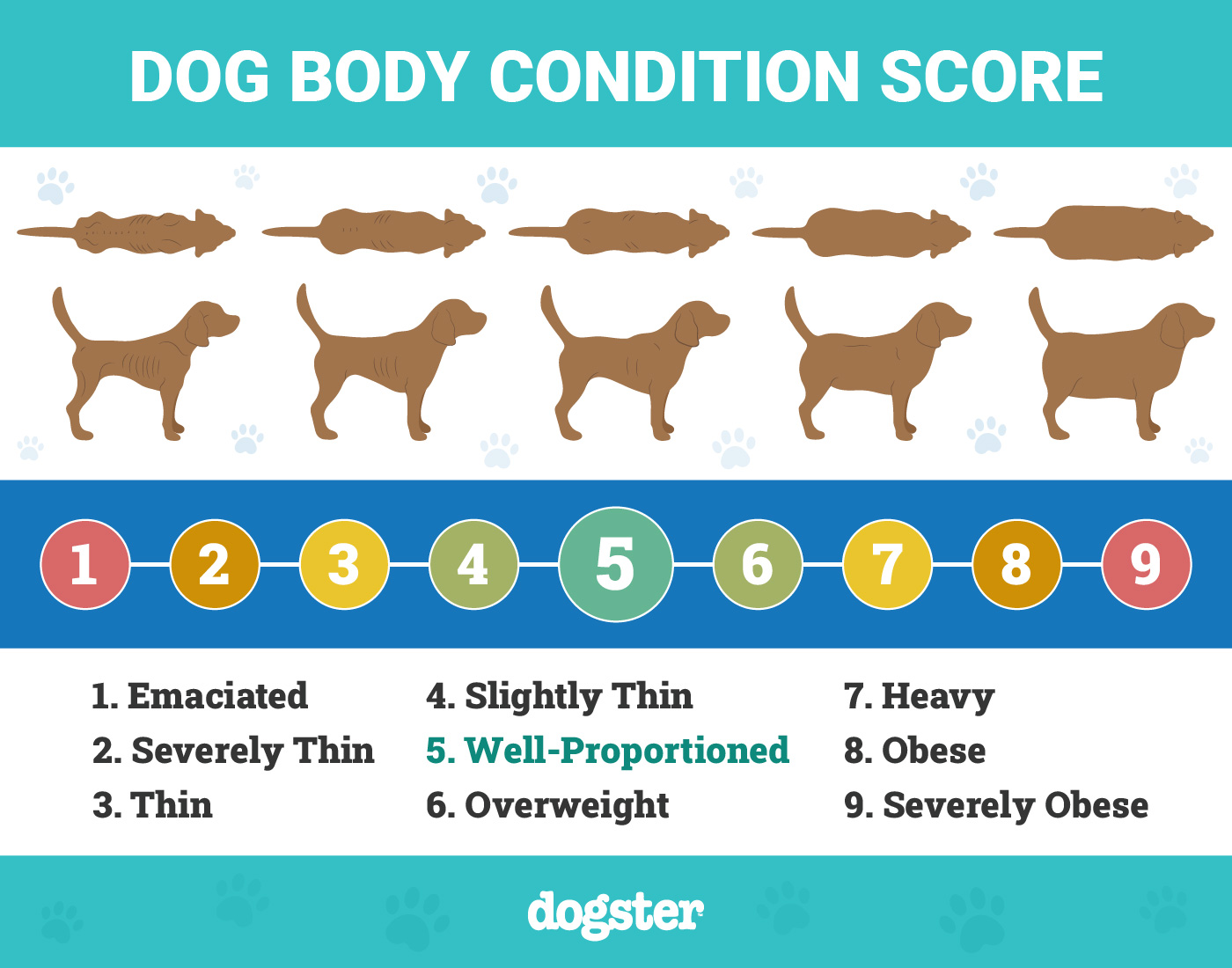
Treating Osteoarthritis
Arthritis, or more correctly, osteoarthritis, is complex, and so is its treatment. Veterinarians use a multi-faceted approach to lessen the pet’s discomfort and slow progression of the condition. Recognizing pain, and pain management are both extremely important. Non-steroid anti-inflammatory drugs (NSAIDs) are common choices of medication and they can offer dramatic improvement in mobility and quality of life of arthritic dogs.
Vets do have other meds at their disposal if your dog can’t tolerate NSAIDs, or if additional pain relief is needed. Your vet may also advise complementary therapies such as physiotherapy, hydrotherapy, acupuncture and laser therapy. However, one of the foundations of your pup’s treatment plan is lifestyle changes, which includes their diet.

Other Factors Related to Arthritis
We mentioned how complicated this health condition is because of the many mitigating factors. We know that it’s not simply a matter of aging. Some dogs show signs of arthritis earlier than you may expect. Lifestyle, weight management, and activity can all profoundly impact your pet’s risk. Another factor that may be off the radar is spaying or neutering your pup.
The conventional wisdom has been to get a neutering procedure done when a dog is around 6 months old. The reasons were admirable in an effort to control unwanted pets and those relinquished to shelters. However, research has uncovered some unintended consequences of this practice in certain breeds.
Breeds such as German Shepherds, Labrador Retrievers, and Golden Retrievers may have an increased risk of joint disorders if the surgery is performed before a year of age. This issue rests with risk factors associated with arthritis—the development of elbow or hip dysplasia. The irony is that solving one problem can sometimes cause another.
This decision is definitely one to discuss with your vet, there are many benefits to spaying and neutering your dog in most situations, but the timing of the surgery should be considered taking your dog’s breed into account. The correlation between this surgery and joint disorders isn’t across the board, but you must also consider a dog’s reduced metabolism and propensity for weight gain after both spaying and castrating, so you can adjust their calorie intake accordingly.
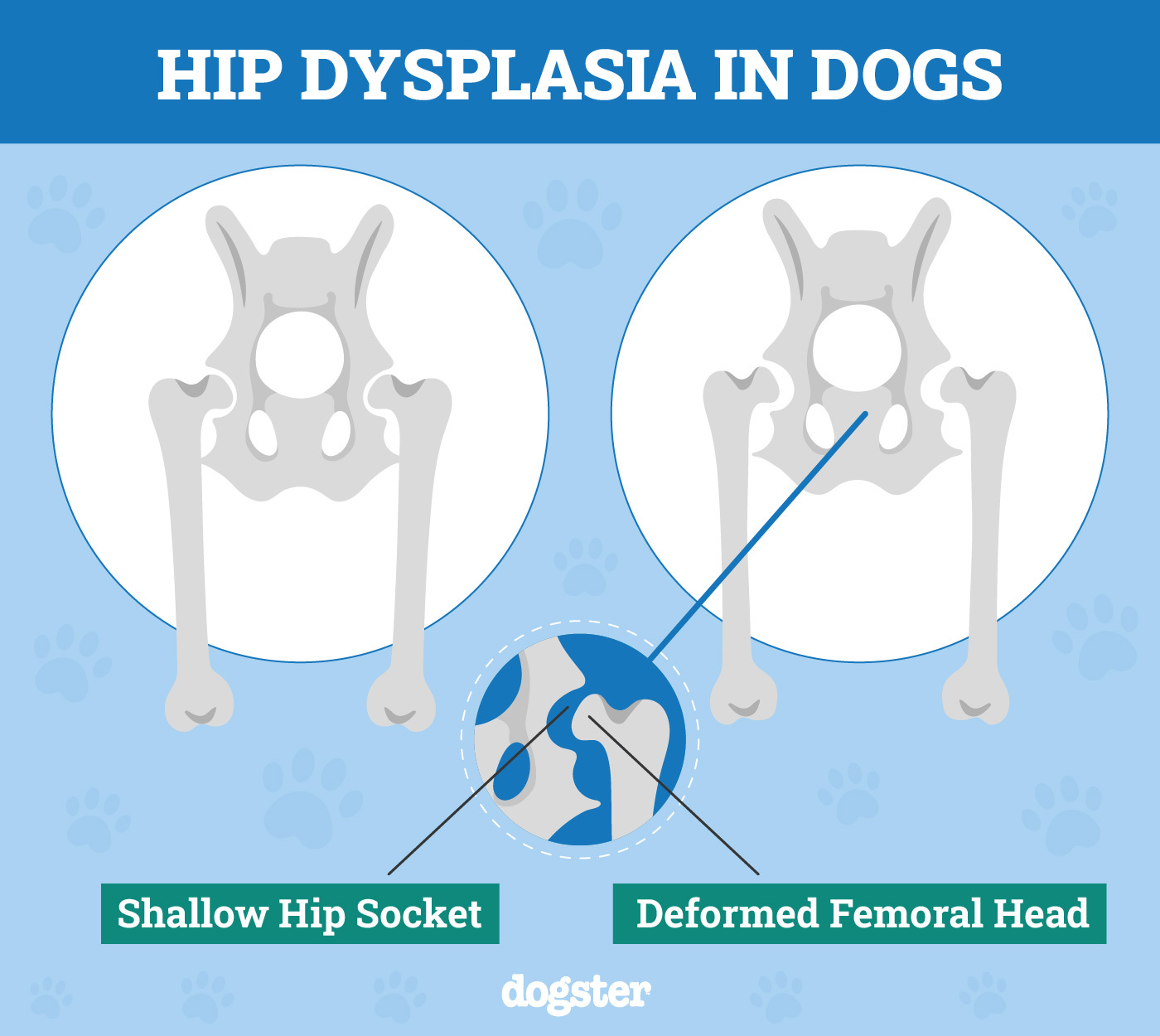

Final Thoughts
Lifestyle factors can make a significant difference in your dog’s quality of life. They can help relieve the pain and discomfort of this progressive disease. While a cure isn’t available, it doesn’t mean you can’t help your pup manage their condition. Diet and weight control are excellent ways to ease your pet’s pain by lessening the load on your pooch’s joints.
Featured Image Credit: Elena Popova, Getty Images










